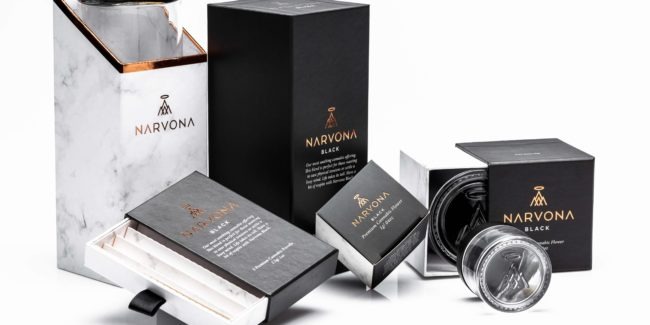You’ve got your budget set, you have a few goals in mind, and now you’re finally ready to start your cannabis marketing…right? Not so fast. Before you sign off on the big marketing proposal, you are going to need to conduct a thorough inventory of your company. If you don’t have your fundamentals in place, then all the money in the world won’t help you reach your marketing goals.
So what should you do before investing in a marketing campaign? There are a number of things that you can do, but generally, you should start by looking at these three things: your branding, website, and goals.
Here are three things to consider before starting your cannabis marketing efforts.
1. Branding
If it’s worth saying once, it’s worth mentioning again. Branding is one of the most critical aspects of your business.
What is Branding?
It is the sum value of how your customers view your company. If people have a negative view of your brand, they will be far less likely to use your goods or services. How do you know if your brand is up to snuff? Ask yourself these questions:
Is my brand aligned with my target audience?
As companies evolve, so too does their customer base. A great example is Facebook. Initially, the social media giant was geared exclusively to college students. Over time, the site opened up to high school students, and then the general public. Imagine how weird it would be if Facebook never changed its branding and kept marketing to only college students. Odds are Facebook wouldn’t be as big as it is today. Likewise, you need to make sure that your brand is appropriately aligned with who your current customers are, and not necessarily who they used to be.
Is my brand unique?
One of the most basic principles of branding is to make yourself stand out from your competitors, so it is vital that you distinguish yourself. Look at your competition. Are you doing something unique, or are you just following the crowd? If a customer can’t pick your brand out from a lineup of other companies, that’s a problem. You don’t have to change everything about your company in order to make your brand unique. Find out what makes your company special, and bring it to the forefront.
Is there unnecessary baggage weighing my brand down?
Everyone goes through hard times, even cannabis brands. Before embarking on your marketing campaign, ask yourself if your company’s past troubles (if there is any) is weighing down your brand today. If there is, then you might want to undergo a rebranding before you launch that marketing campaign. Change your logo, change your name, change something that helps make a clean break from your company’s past.
2. Website
Having a good company website goes hand-in-hand with good branding. Your website will play a vital role in a customer’s first impression of your company. You may have a billion-dollar company that trades on the New York Stock Exchange, but if your website looks like it was built with GeoCities in 2001, no one is going to take you seriously.
In addition to having a website that looks good, you also want a website that works as well as it looks.
Here are a few things to consider:
SEO
You don’t necessarily need to be the first result that comes up on Google when someone searches for cannabis, but you still need to make sure that your website’s SEO is up to speed. If a customer can search for your company name, and your website doesn’t even make it to the first page, that’s a problem. If you’re not the most knowledgeable person when it comes to SEO, don’t worry, there are a lot of tools out there to help. Here’s a quick list of some of the best SEO tools out there.
Speed
Check out your website and see how long it takes to load. If it takes more than a few seconds, you have a problem. Did you know that website that load in less than five seconds see 70% longer average sessions? In this increasingly digital age, people don’t like to wait for things, and if you’re website moves as fast as a snail, then you’re losing out on potential customers. There are a lot of ways you can speed up your website, and you can find some of them here. If you find yourself a little out of your depth, there’s nothing wrong with bringing in an expert to help you out.
Mobile-Friendly
In 2016, mobile web traffic officially surpassed desktop traffic on the internet. In addition, last year Google officially moved to mobile-first indexing.
That means that you need to make sure your website is optimized for mobile browsers and Google is looking at mobile performance over desktop.
Take your phone right now and look at your website. How does it look? Is it easy to navigate your site or incredibly frustrating? If you’re having a hard time, then it’s time for a website redesign. Here’s a great resource to help you get started.
3. Goals
Having objective-based goals is basically marketing 101, but how do you know if your goals are actually good? There are a lot of different ways to evaluate your cannabis marketing goals, but the one I use the most is the S.M.A.R.T. system. S.M.A.R.T. is an acronym that stands for Specific, Measurable, Attainable, Relevant, and Timely.
Here’s how to set SMART marketing goals.
1. Be SPECIFIC
You need to make your goals as specific as possible. Write down what you want to achieve, how you plan on going about it, who is going to help, what your limitations or challenges might be, why you want to achieve this goal, etc. The more specific your goal is, the better chance you’ll have of reaching it.
2. Make it MEASURABLE
Your marketing goals need to be written in such a way that you will know when you achieve them. Attach specific numbers and metrics to your goals. Don’t just write down “increase revenue.” Write down how the exact amount you want your revenue to increase to. By making your goal measurable, your path to success will become that much clear.
3. Keep it ATTAINABLE
It has been often said that you should shoot for the moon, because if you fail you’ll still hit the stars, but in business that is the wrong approach. Setting unrealistic goals is the easiest way to invite disappointment, and it will kill any momentum that your marketing campaign generated. That doesn’t mean you can’t be ambitious, but keep your goals within the realm of possibility.
4. Make sure it’s RELEVANT
Make sure your goals are relevant to your businesses overall growth strategy. Appealing to adults over the age of 80 might be a laudable goal, but if your brand is geared toward millennials, it might not be the best use of your company’s resources.
5. Keep it TIMELY
Having obtainable, measurable goals is great, but if you don’t have a time-table to achieve these goals, there’s almost no point. Make sure your goals have a specific deadline. Like your overall goals, keep your timeline realistic and flexible. Not giving yourself enough time to achieve your goals is almost as bad as having no timeline at all.
Before making investments in a marketing campaign, you want to make sure that you have all of your ducks in a row. While it’s impossible to list every issue and permutation worth considering, at the very least you need to make sure that your branding is on point, your website is performing at optimal efficiency, and your goals are well thought out. If you can address at least those three things, then your marketing campaign will be in a better position to succeed.



